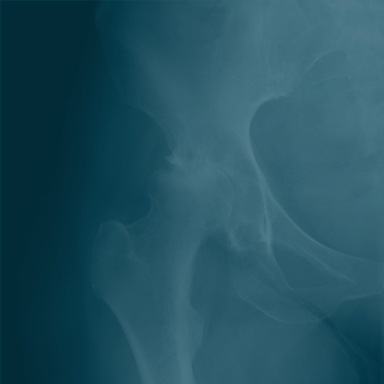
What is bone cancer?
Bone cancer can form as a malignant (cancerous) or benign (noncancerous) tumor that destroys surrounding bone tissue. Benign tumors are actually more common than malignant tumors, but both compress healthy bone tissue. The only difference is that benign tumors do not destroy bone tissue, do not metastasize (spread), and do not pose any real life threat.
In some cases of bone cancer, it develops from a cancer that has metastasized from another part of the body such as the breast, lung, or prostate. This kind of cancer is called metastatic cancer. Bone cancer that does not spread is less common than cancer that does.
What kinds of bone cancer are there?
The most common types of bone cancer are:
- Osteosarcoma- cancer that develops from osteoid tissue in the bone. This kind of cancer most often arises in the knee or upper arm. Osteosarcoma is most common in individuals between the ages of 10 and 19.
- Chondrosarcoma- cancer that develops in cartilaginous tissue. Cartilage is the material that is layered over bones and joints. This kind of cancer is most often found in the pelvis, upper leg, and shoulder. Chondrosarcoma is commonly found in adults over the age of 40.
- The Ewing Sarcoma Family of Tumors (ESFTs)- cancer that may arise in soft tissue (muscle, fat, fibrous tissue, blood vessels) around the bone. This kind of cancer is most common along the backbone, pelvis, legs, and arms. Children under 19 years of age are at a higher risk for ESFTs.
How is bone cancer diagnosed?
Physicians will first administer a physical exam along with a review of the patient’s personal medical records and family medical history. Laboratory and diagnostic tests will typically be ordered. These include:
- X-rays
- Bone scan
- CT or CAT scan
- MRI procedure
- PET scan
- Angiogram
- Biopsy
- Blood tests
What are some treatment options for bone cancer?
Depending on what stage the cancer is in as well as the type, size, and location, there are a number of treatment options.
- Surgery- A surgeon will remove the tumor using special tools to keep the healthy tissue in place.
- Chemotherapy- A patient will usually receive some types of anticancer drugs. Chemotherapy is not a treatment option for chondrosarcoma, however.
- Radiation therapy- A patient will be exposed to high-energy x-rays that are used to kill cancer cells. Radiation therapy is often used in combination with surgery.
- Cryosurgery- This type of surgery uses liquid nitrogen to go in a freeze/kill cancer cells.
Because there is no cure for this notorious disease, clinical trials are available for those willing to participate. People who get involved can help scientists and researchers develop new treatments and better ways to execute existing treatments. If you or someone you know is living with cancer and has pain either from surgery or the cancer itself, call Southwest Spine and Pain Center to find out what treatments we offer.
If chronic pain is impacting your life, don't wait to schedule an appointment at Southwest Spine and Pain Center. With three locations and growing, the pain management specialists at Southwest Spine and Pain Center are dedicated to helping those who suffer from chronic pain live the life they want to! To schedule an appointment, visit our locations tab!
The advice and information contained in this article is for educational purposes only, and is not intended to replace or counter a physician’s advice or judgment. Please always consult your physician before taking any advice learned here or in any other educational medical material.
©Southwest Spine and Pain Center, 2014
©Medical Marketing Solutions, 2014
